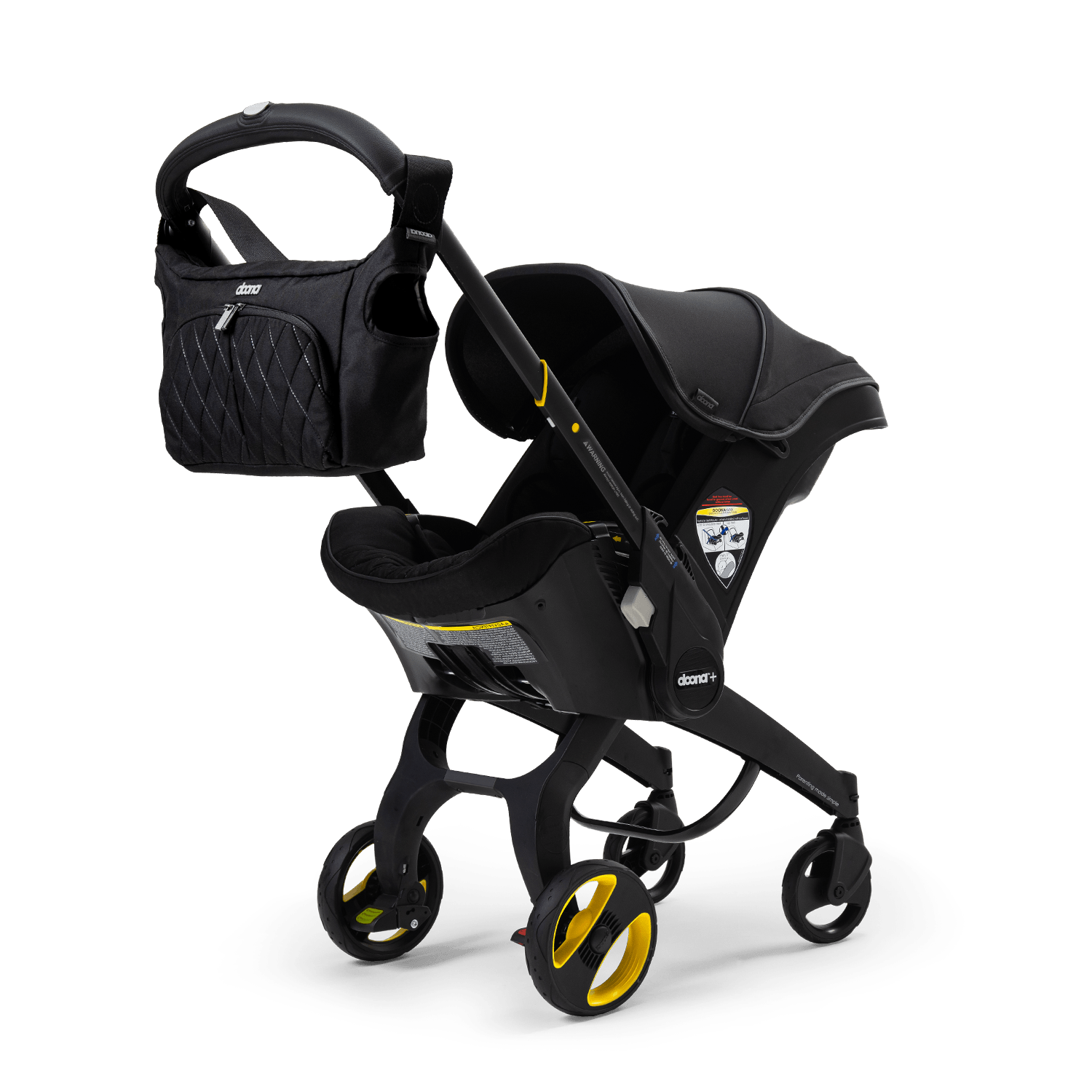Insights on early childhood nutrition with Cinthia Scott
In our latest Insight Series, we spoke with Registered Pediatric Dietitian (RD), International Board-Certified Lactation Consultant (IBCLC), and mom of two, Cinthia Scott! Cindy shares her expert tips on providing optimal nutrition to 0-5 year-olds, establishing healthy eating patterns from a young age, and making mealtime an enjoyable experience for everyone. Known as the founder of the Baby Dietician, we also discuss the support she provides parents in her Starting Solids 101 Program and through her book, 101 Before One: Starting Solids. Keep reading for simple, evidence-based techniques on nourishing your little ones!
What inspired you to become a Pediatric Dietitian and a Board-Certified Lactation Consultant?
Growing up, I was around dietitians early on due to my sister having cystic fibrosis and needing to follow a specialized diet. Knowing how important nutrition was to help manage her symptoms and improve her health opened my eyes to the profession and encouraged me to learn more about the best ways to nourish my own body.
When I became a mom, I realized there was a lack of easy-to-access, evidence-based information available for breastfeeding and starting solids. I wanted more parents to be educated on the critical window of time we have in the first 1,000 days of life to ensure an adequate nutrition intake that can set the stage for lifelong health.
I became a lactation consultant and pediatric registered dietitian so I can spread evidence-based education in a practical way to mothers around the world to help nourish our children well.
Breastfeeding can come with its challenges — what are the most common struggles new parents face, and how can they navigate them?
For most of us, including myself — I think the first few days of breastfeeding are usually the most challenging. We are facing major hormonal fluctuations, pain, and learning to parent a new child who we have just met while also trying to ensure they are fed! Many mothers are told they aren’t making enough milk or they need to supplement with formula until their milk comes in, which isn’t always the case.
"Separation of baby and mom during the golden hour is unfortunately common which may prevent challenges with mothers being able to produce a full milk supply."
Another common struggle is when baby and mom are separated during the golden hour post birth (the first hour after delivery). Studies show that it is critically important for baby and mother to use this hour for skin-to-skin and nursing. Separation of baby and mom during the golden hour is unfortunately common which may prevent challenges with mothers being able to produce a full milk supply.
Newborns are also learning how to latch onto the breast and effectively transfer milk during this time, which takes practice. In the first few days and weeks after birth, if we are provided inaccurate information or not given appropriate support with meeting our feeding goals it can be overwhelming and can impact our breastfeeding journey.
For parents who are breastfeeding while introducing solids, what’s the best way to find a balance between the two?
When introducing solids between 6-12 months of age, milk feeds still remain the primary nutrition source. Complementary feeding is the term for solids offered between 6-12 months of age because they “complement” the primarily milk-based diet. We want to continue to prioritize milk feeds, especially before 9 months of age. We recommend continuing with your regular milk feed schedule and offering solids an hour after milk feeds in the first few months of starting solids.
Breast milk and formula are perfectly designed to fuel optimal growth and development during the first year of life. Offering solids at 6 months is needed to aid in meeting nutritional needs, allow your child to practice learning to eat, and to expose them to a wide variety of tastes and textures to help develop a diverse palate. However, it doesn’t become the main source of nutrition until close to 12 months of age.
Starting solids can feel overwhelming for many parents. What are some common misconceptions, and how do you help ease those concerns?
One common misconception is that vegetables need to be introduced first to avoid your child developing a preference for sweet foods. Children are born naturally craving sweeter taste profiles due to human milk being a sweeter taste profile. No matter the order of food introduction, your child may prefer sweet tastes.
The best way to encourage a diverse palate that includes bitter flavors (like those found in vegetables) is to offer lots of exposures to a wide variety of foods and flavors early on. Try to add new foods frequently and avoid serving the same foods over and over again which can create taste preferences.
Another misconception is that as soon as you introduce solids your child should be consuming a large amount of food. Parents may have an expectation that their child will consume a whole jar of baby food and that is a good indicator that they are consuming adequate amounts but that is not necessarily true. Children will take a bit of time to get used to their new skills of eating and may not consume much for the first few weeks of introducing solids. That is considered okay and normal! Remember, milk feeds are still meeting their main source of nutrition.
Your book 101 Before One: Starting Solids has been a go-to guide for parents. What are some of its key takeaways?
Our book really focuses on honoring our children’s innate intuitive eating skills by letting them lead the way with how much or how little they consume. We encourage you to practice responsive feeding and allow lots of opportunities for food exploration to encourage a diverse palate and ensure nutritional needs are being met.
We also believe that babies can take part in the family-meal right from the start! This means modifying your preferred cultural meals or dishes so your baby grows up already loving the flavors and foods that you love. There isn’t a need to ever have to make two separate meals if you don’t want to. We teach you how to safely offer a variety of foods in a way that can also encourage adventurous eating.
Baby-led weaning vs. purees is a hot topic. Do you recommend one approach over the other, or is there a way to combine both?
We encourage parents to take the approach they feel most comfortable with. Starting solids should be fun and not overwhelming or stressful. If parents feel more comfortable starting with purees and then slowly transitioning to finger foods we encourage them to do that.
Baby-led weaning is not technically “only finger foods,” it is more rooted in allowing your child to self-feed no matter what type of foods are being provided. You can let your baby self-feed purees by loading them on a spoon and handing them over.
"We encourage parents to take the approach they feel most comfortable with. Starting solids should be fun and not overwhelming or stressful. "
Even if you are offering purees, you can try offering a variety of different thickness levels of purees to help them be exposed to different textures early on that can help prevent fussy eating tendencies or food preferences as they grow. You can definitely combine both baby-led weaning and purees together and it is perfectly safe to do so. There is not a danger in it and this is the approach that most parents take.
How can parents foster a positive relationship with food from an early age and help prevent picky eating?
Offer lots of variety early on and use responsive feeding methods! During the period of 6-9 months of age your child will naturally be more inclined to try just about any food you offer them. Use this willingness to try foods to your advantage and expose them to tons of flavor and texture variety.
Let your baby lead the way and honor their hunger and fullness cues. Avoid pressuring your child to eat beyond their hunger of fullness cues and make sure meals are a positive and calm environment.
"Eat the foods that you want your kiddos to eat because that is a powerful tool in raising an adventurous eater."
Eat the foods that you want your kiddos to eat because that is a powerful tool in raising an adventurous eater. As your child gets older (18-24 months of age) start incorporating them into meal preparation and allow them to help make choices surrounding meals (would you like carrots or butternut squash for dinner?). Kids crave autonomy and independence, by allowing them some say in their food choices we can naturally increase food acceptance and avoid meal time battles.
What are your favorite nutritious, easy-to-prepare meals or snacks for busy parents to give their toddlers on the go?
One of my favorite nutritious meals for my kids on-the-go is, of course, the classic peanut butter and jelly but I bump up the nutrition by making my own chia seed jam and adding hemp seeds to increase the protein content. A couple other favorites are hummus and veggie tortilla roll ups and egg salad with multigrain crackers.
For homemade snacks on-the-go we rely a lot on peanut butter and pretzels, boiled eggs, hummus and cucumbers, as well as making veggie packed muffins and cookies from our 101 Before One Cookbook.
What are some of the biggest myths about infant and toddler nutrition that you often hear, and how do you debunk them?
I commonly hear that children should not be given solid foods until they have teeth, which is far from the truth. Solids are needed at 6 months of age and babies have tough gums that are perfectly capable of chewing soft and mushable foods. Some children will not have any teeth until close to 12 months of age. Waiting until then to offer solid foods may unnecessarily increase a child’s risk for nutrient deficiencies, fussy eating tendencies, or texture preferences.
If you could give one piece of advice to new parents navigating feeding and nutrition, what would it be?
Meals should be fun and not stressful. If you are feeling stressed and overwhelmed around meal times, seek support from healthcare professionals to find an evidence-based approach to making mealtimes peaceful for your family.
Studies show that parental anxiety around foods can increase picky eating tendencies and cause more tension around meals. Lower your perceived expectation of how much of the meal you want your kids to eat. We aren’t in their bodies and we don’t know their hunger cues!
We want our kids to know that the table is a safe place to come to nourish our body with yummy foods and enjoy time with our parents. We don’t want them to feel scared, anxious, or overwhelmed at the table. Seek support if you feel like you don’t know where to begin!
Cinthia Scott is a registered dietitian (RD), international board-certified lactation consultant (IBCLC), and mom of two. She is co-author of 101 Before One: Starting Solids, founder and owner of The Baby Dietitian, and the creator of the Starting Solids 101 Program. Stay connected with Cinthia through her website and Instagram handle @the.baby.dietitian.
At Doona, we’re always trying our very best to make parenting simpler for every family. Which is also why we’ve created our innovative and revolutionary Doona Car Seat and Stroller which transforms from a car seat to a stroller in the click of a button; and Liki Trike — the most compact folding toddler trike on the market that grows alongside toddlers with five modes of use.
















